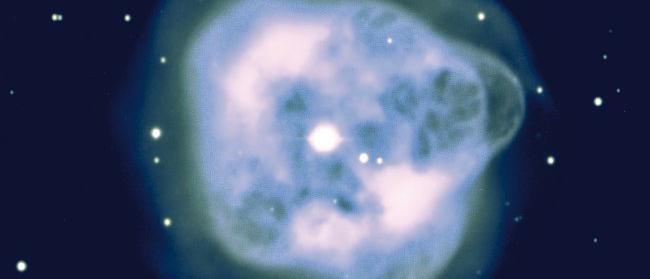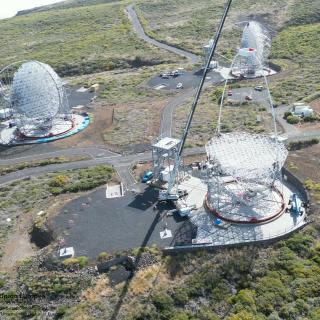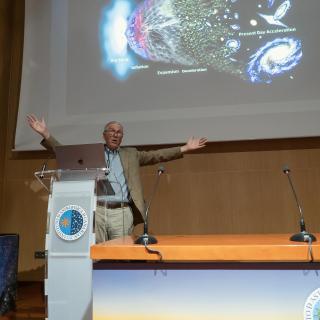A team of astronomers led by David Jones, researcher of the Instituto de Astrofísica de Canarias (IAC) and of the Universidad de La Laguna (ULL), have discovered a binary star at the heart of the planetary nebula NGC1514 with an orbital period of more than nine years - the longest of its kind known. The results, published in Astronomy & Astrophysics Letters, are part of a wider survey led by KU Leuven (Belgium) and spanning nearly 10 years with the high-resolution spectrograph HERMES mounted on the Mercator telescope of the Observatorio del Roque de Los Muchachos (Garafía, La Palma).
Planetary nebulae, despite their name, bear no relation to planets. They are the glowing shells of gas and dust believed to represent the final stages of all Sun-like stars. The variety of shapes found amongst planetary nebulae, ranging from near perfect spheres to highly extended hourglass-like forms, brings into question the capacity of individual stars to produce such a startling array of structures. For that reason, it has been proposed that the interaction between the star forming the nebula and a companion star could reproduce the range of observed structures.
"Until now, the only binary stars found in planetary nebulae have had very short periods of around 1 day or less", says David Jones, "While these systems will definitely shape their nebulae, the lack of longer periods was worrying as these are expected to be more common". NGC 1514 was considered to be a very strong candidate for hosting a binary central star because of its strongly aspherical form, but previous studies had failed to prove its nature. "We knew it had to be a binary star.We just needed to be persistent and keep observing the system", says Hans Van Winckel, researcher at the KU Leuven and co-author of the study.
The extreme stability of the purpose-built HERMES instrument meant that very small changes in the velocity of the star could be observed, and continuously monitoring those changes over the course of ten years finally revealed that the changes are due to the motion of the stars as they orbit around one another. The eccentricity of its orbit (ellipse shaped instead of circular) also allowed to observe those differences in the velocities.
The results of this study make it clear that all types of binaries, even ones with very long periods, can have a big impact on the shape of nebula they form in their final stages. This has important implications for the final fate of our own Sun. Now, it is known that long period binaries can play such an important role, it opens the possibility that a massive planet, such as Jupiter, with a similarly long period (12 years) could have a similar effect to that observed in NGC1514 planetary nebula. These results are relevant because it helps to understand how stars deposit in the interstellar medium the gas and dust, rich in atoms and molecules, from which the successive stellar generations will be born. "By studying these processes in nebulae we are trying to understand how the Solar System and the Universe will evolve," concludes David Jones.
Article: “The long-period binary central stars of the planetary nebulae NGC 1514 and LoTr 5” by David Jones et al. Astronomy & Astrophysics Letters. Volume 600, April 2017.
https://doi.org/10.1051/0004-6361/201730700
Contact:
- David Jones: djones [at] iac.es (djones[at]iac[dot]es)



